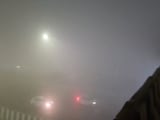Aerospace major Boeing has refuted whistleblower claims it takes manufacturing shortcuts, sidesteps safety regulations, and silences critics in its rush to produce more planes and rake in bigger profits. The company - already facing scrutiny after a January mid-air incident - pointed to "extensive and rigorous testing of the fuselage and heavy maintenance checks" that found "zero evidence of airframe fatigue".
Boeing also said it had "painstakingly inspected and reworked airplanes, and improved production quality to meet exacting standards" of the United States' Federal Aviation Authority, or FAA.
The statement came after (yet another) whistleblower accused it of putting thousands of lives at risk each time a 787 Dreamliner or a 777 - its top-selling models - took off anywhere around the world.
"In 13 years of service, the global 787 fleet has safely transported more than 850 million passengers on more than 4.2 million flights. A 787 can safely operate for at least 30 years before needing expanded airframe maintenance routines..." Boeing said, after a former engineer told a US Senate committee the Dreamliner airframe could suffer premature fatigue leading to a tragic accident.
US Senate Hearing On Boeing 787
On Wednesday, Sam Salehpour - who worked at Boeing for nearly two decades, and has spent twice that in aerospace - compared a potential incident to repeatedly bending a paper clip.
"You do it once or twice... it doesn't break. But it breaks at some time," he said.
Specifically, the allegation is that the Dreamliner contains gaps between parts that are well above company standards. This, he has claimed, could cause a structural failure without warning.
READ | "Confident In Durability Of 787, 777s": Boeing On Its Safety Practices
To compensate for these gaps - beyond the .005 inch standard set by Boeing - Mr Salehpour said the company employed force - up to 165 times the recommended level of 10 pounds - during assembly.
Mr Salehpour has demanded the entire 787 fleet be grounded for investigation. "The attitude from Boeing, from the highest level, is just to push the defective parts, regardless of what it is," he said.
READ | Boeing Took Shortcuts In Building 787 Dreamliners, Claims Engineer
Mr Salehpour also testified he was blackballed by senior executives and feared for his well-being after raising the safety concerns. He said he became a whistleblower after being punished.
According to the Associated Press, when he red-flagged this matter, his immediate supervisor asked if he was "in or out". "'Are you going to shut up?' That's how I interpreted it," Mr Salehpour said.
Boeing was not present at the hearing but acknowledged imperfections but said it is making corrections. "We know we have more work to do and we are taking action..." the company said.
The company also said retaliation against junior employees is strictly forbidden.
"Zero Fatigue", Says Boeing
Last week, after Mr Salehpour's complaint first emerged, the company said an estimated 99 per cent of the gaps conform to the 0.005 inch standard. A senior Boeing engineer, Steve Chisholm, told reporters there was "zero fatigue" found in testing, which involved placing a 787 in a test rig and subjecting it to pressurisation for period thrice as long as its expected lifespan of 44,000 cycles.
"We're talking about 150 pounds on structure meant to carry many thousands of pounds..." Mr Chisholm said. "It's acceptable."
Other Boeing engineers also said design-testing and inspection of in-use planes, some as old as 12 years, showed no sign of fatigue or cracking in composite panels that make up the airframe. The company has stressed the material used is formed from carbon fibre and resin, and is 'nearly impervious to fatigue', which is a constant worry with conventional airplane fuselages.
READ |
The FAA said the 787s in use at this time are in compliance with current safety regulations.
Nevertheless, Mr Salehpour's claims alarmed American lawmakers, who called for a detailed investigation, including hearing from pilots, airlines flying 787s, and other expert witnesses.
"This requires a full-blown investigation," Senator Ron Johnson (Republican) of Wisconsin, said.
Second Senate Hearing
A second hearing, before a different committee, also red-flagged Boeing's safety practices, and highlighted, AP reported, that workers feel pressured to push planes past the production process.
These hearings have ramped up pressure on a company still dealing with the fallout of the January 5 mid-air incident involving an Alaska Airlines 737 Max. Four of the bolts securing a door blew off.
The National Transportation Safety Board's initial report said the lack of damage or deformation around the holes "indicate the four bolts that prevent upward movement of the (door) plug were missing before the plug moved upward off the stop pads."
The incident revived major questions around safety practices that had initially arisen after fatal crashes in 2018 and 2019, but which later subsided following a lengthy grounding of the 737 MAX.
With input from agencies
NDTV is now available on WhatsApp channels. Click on the link to get all the latest updates from NDTV on your chat.















